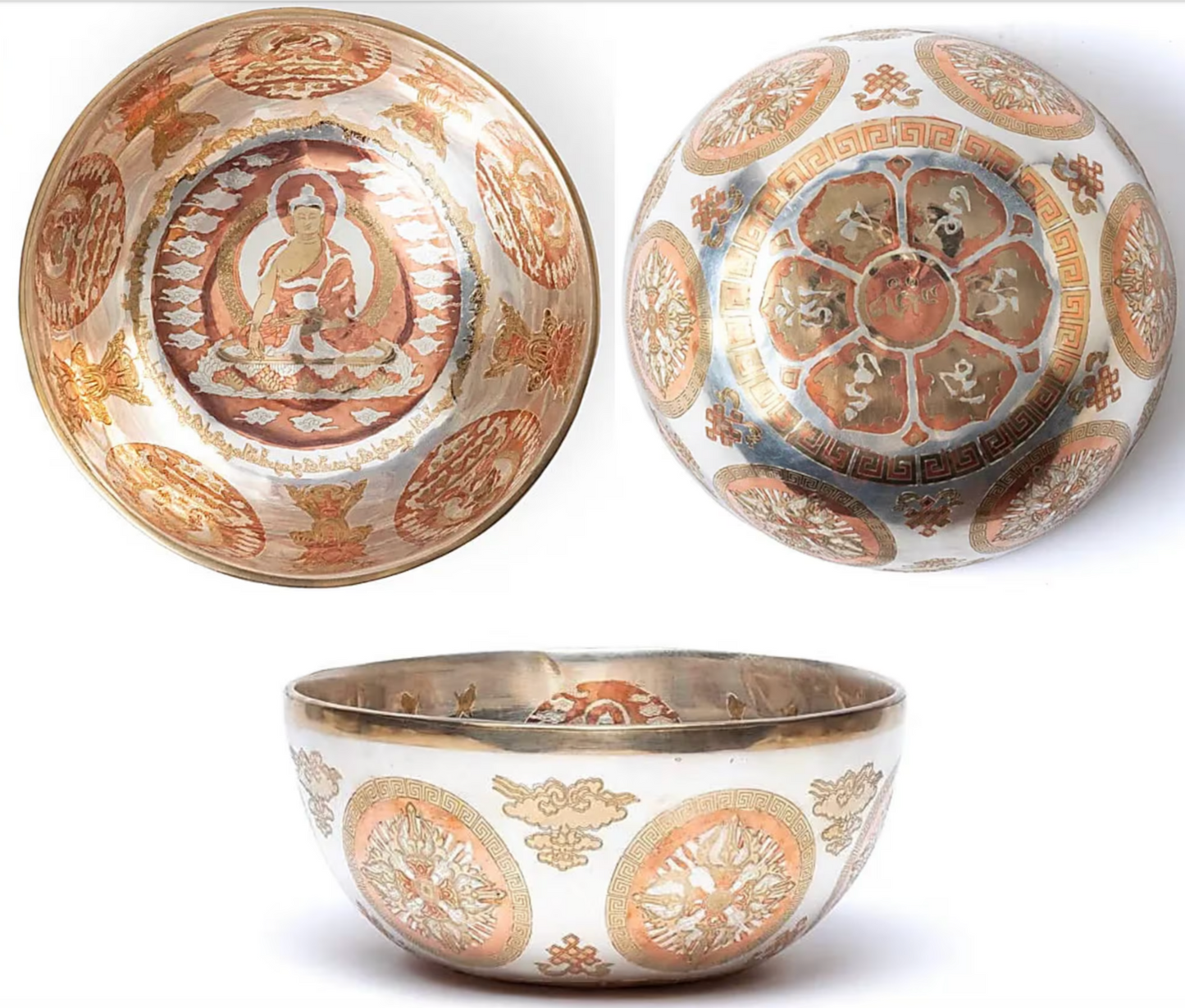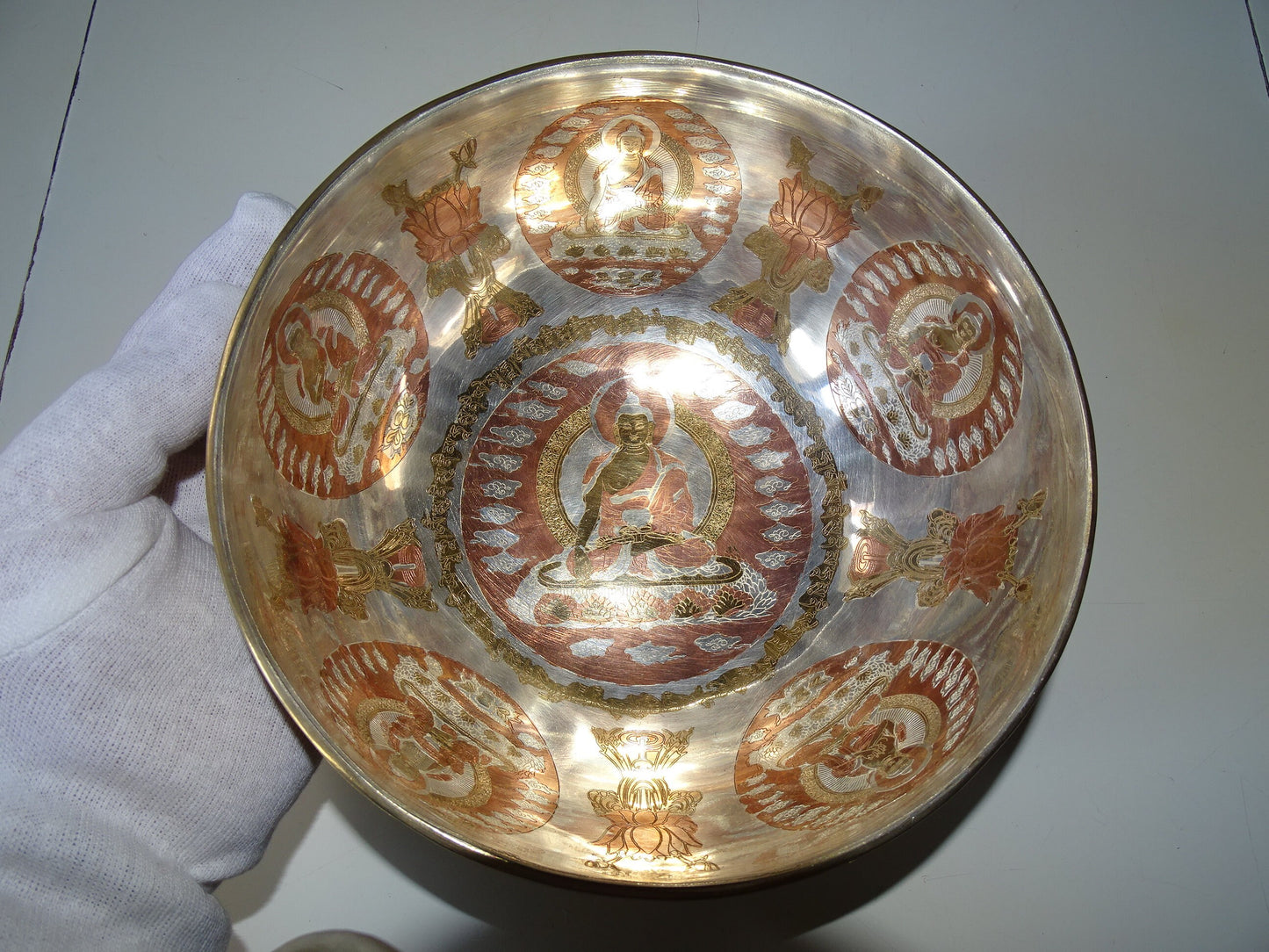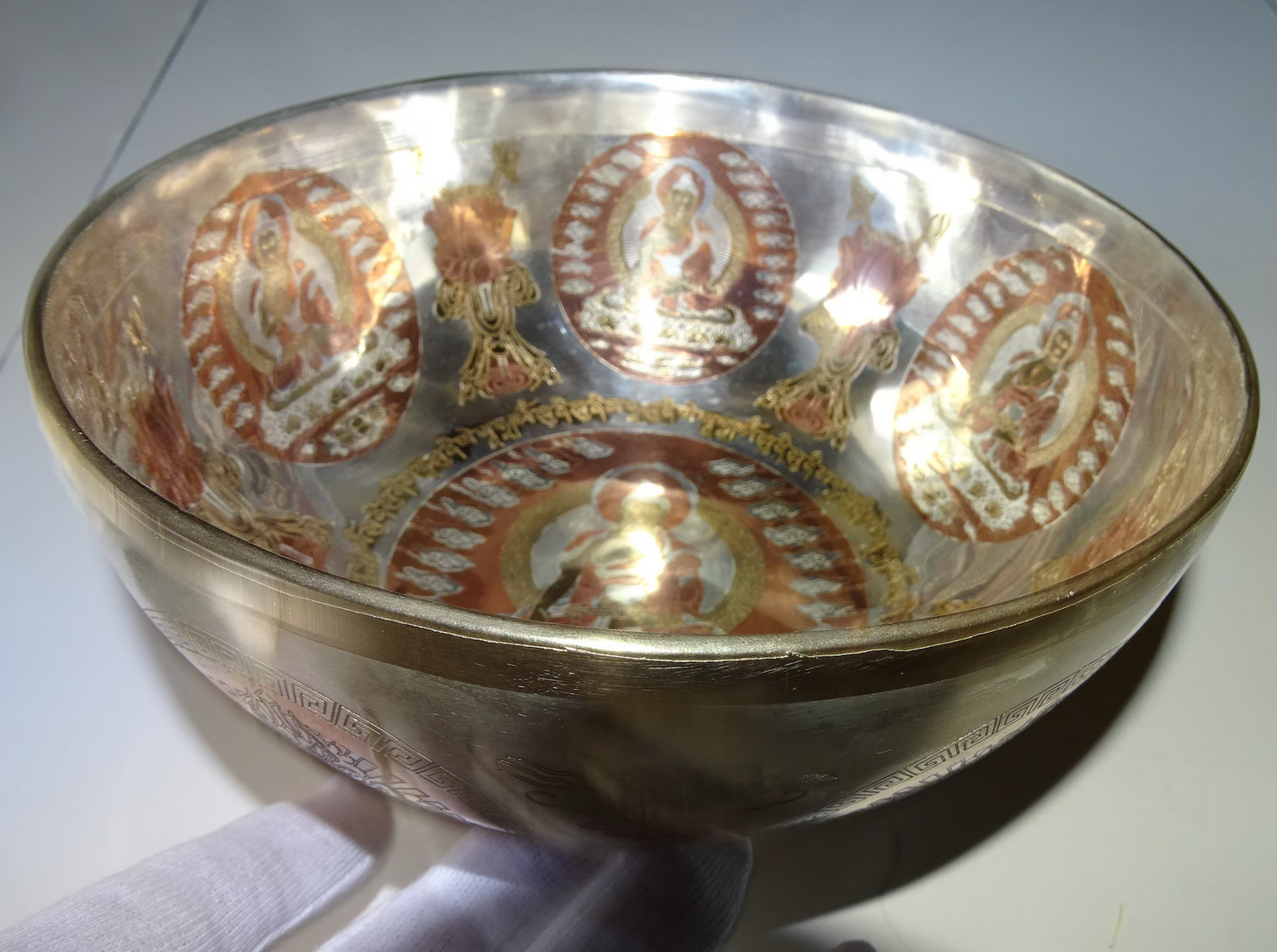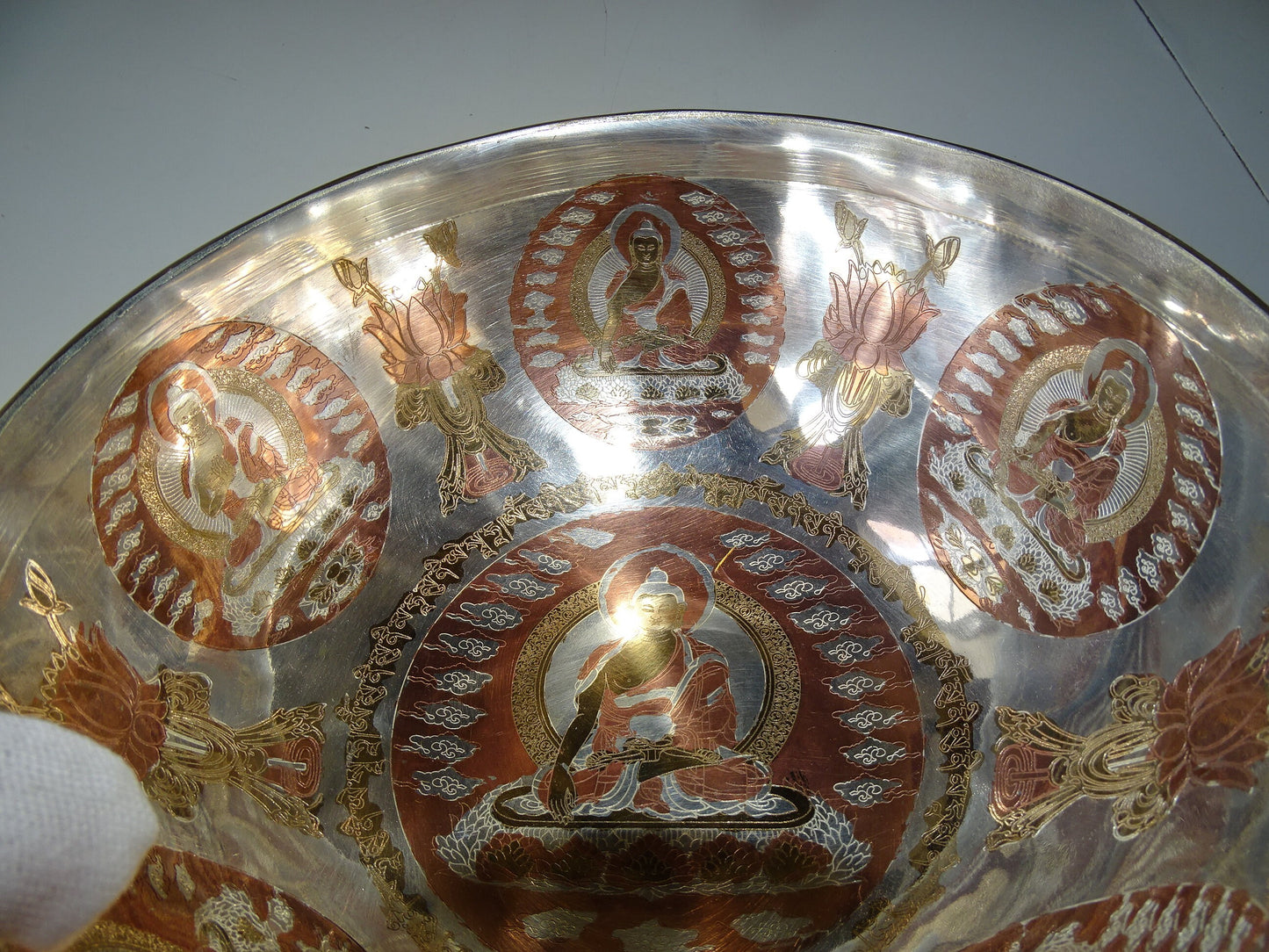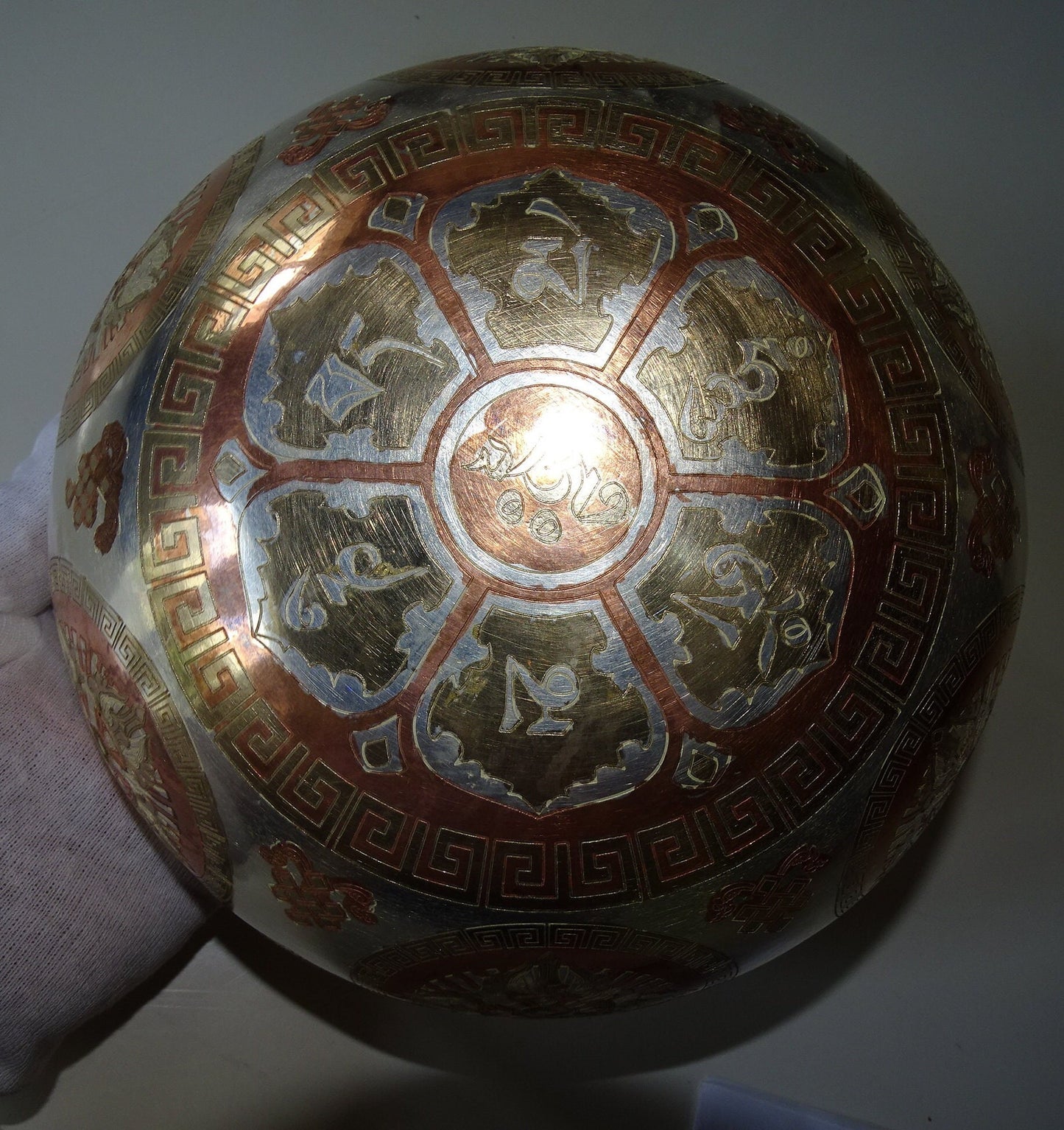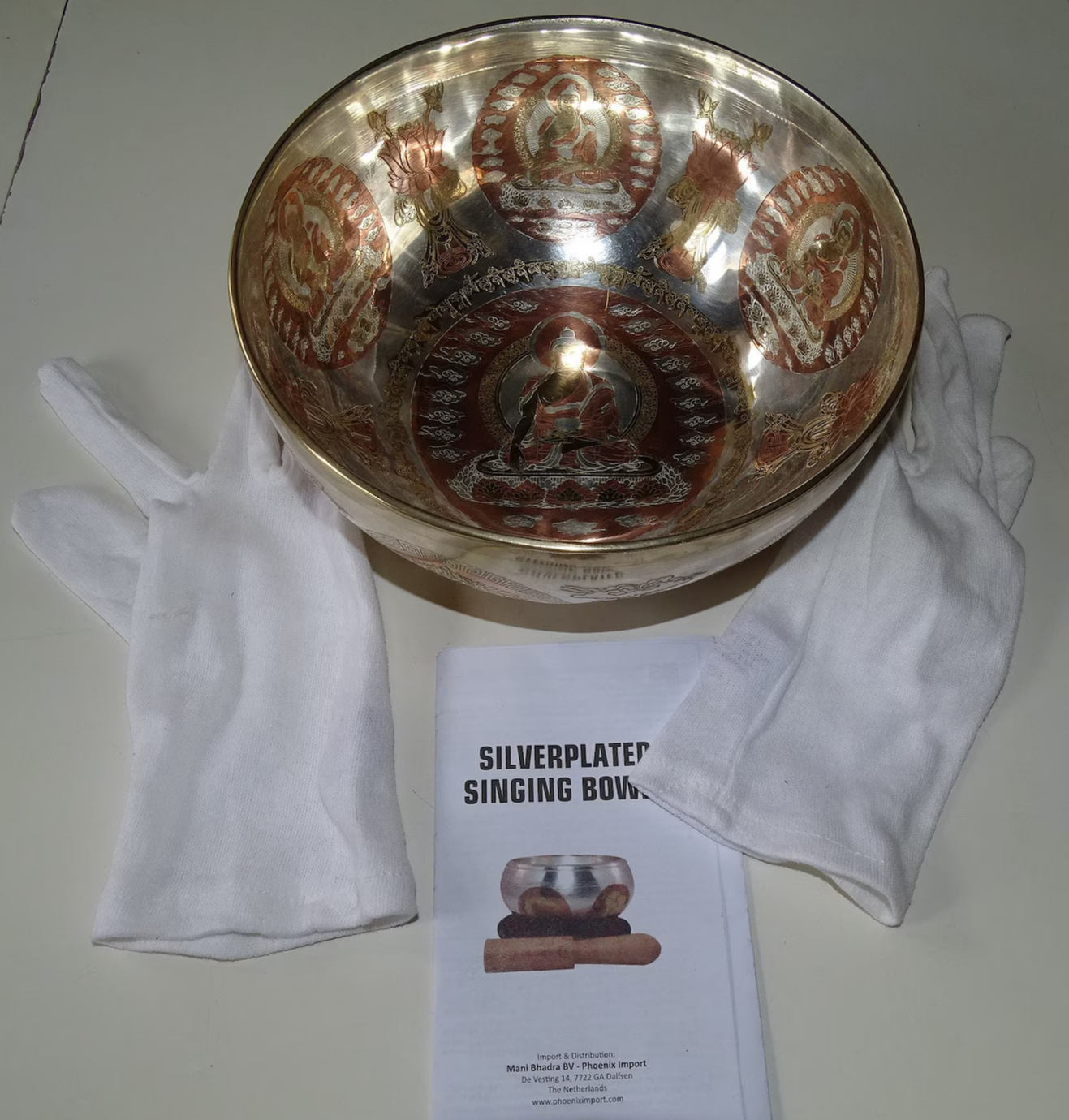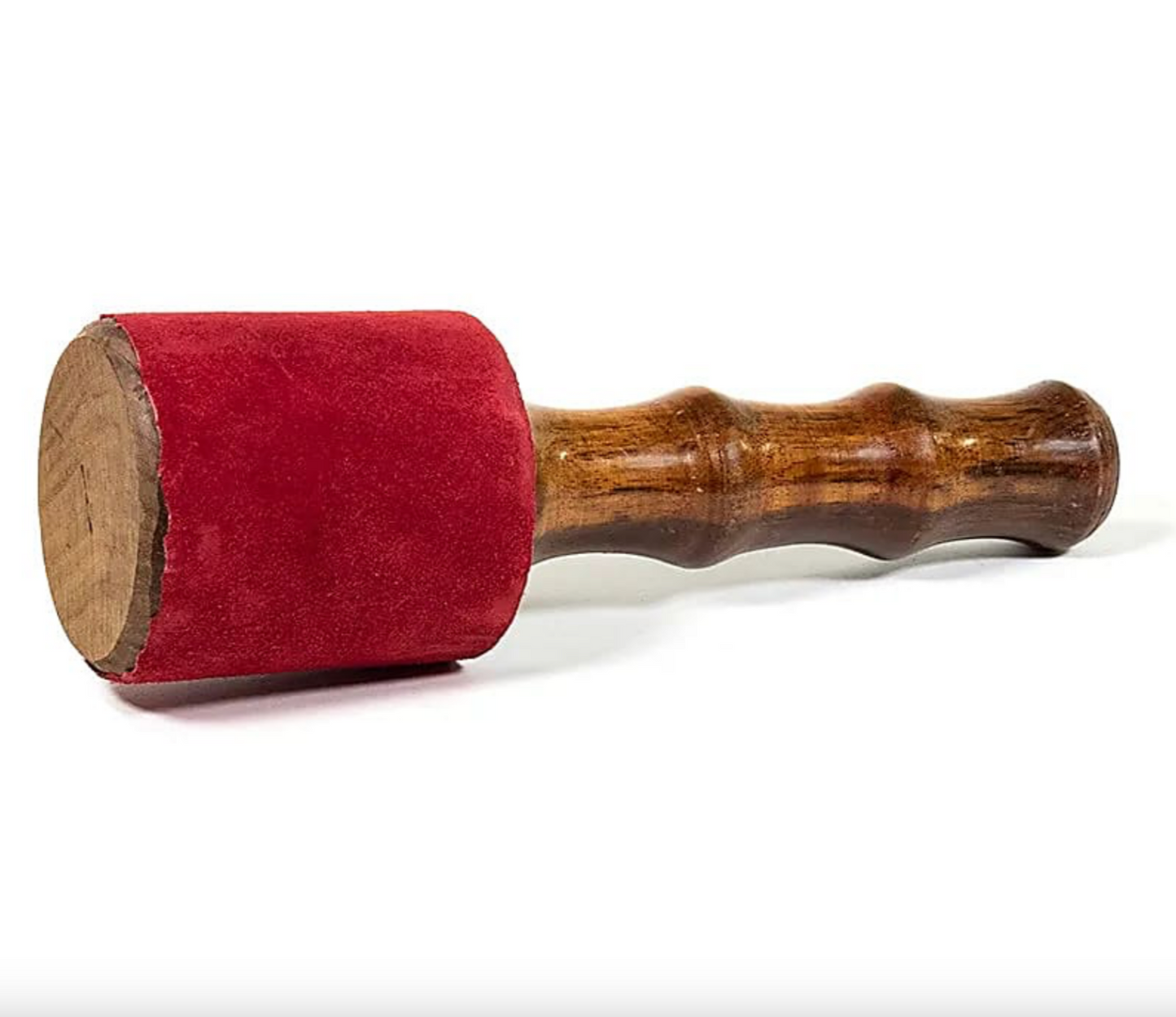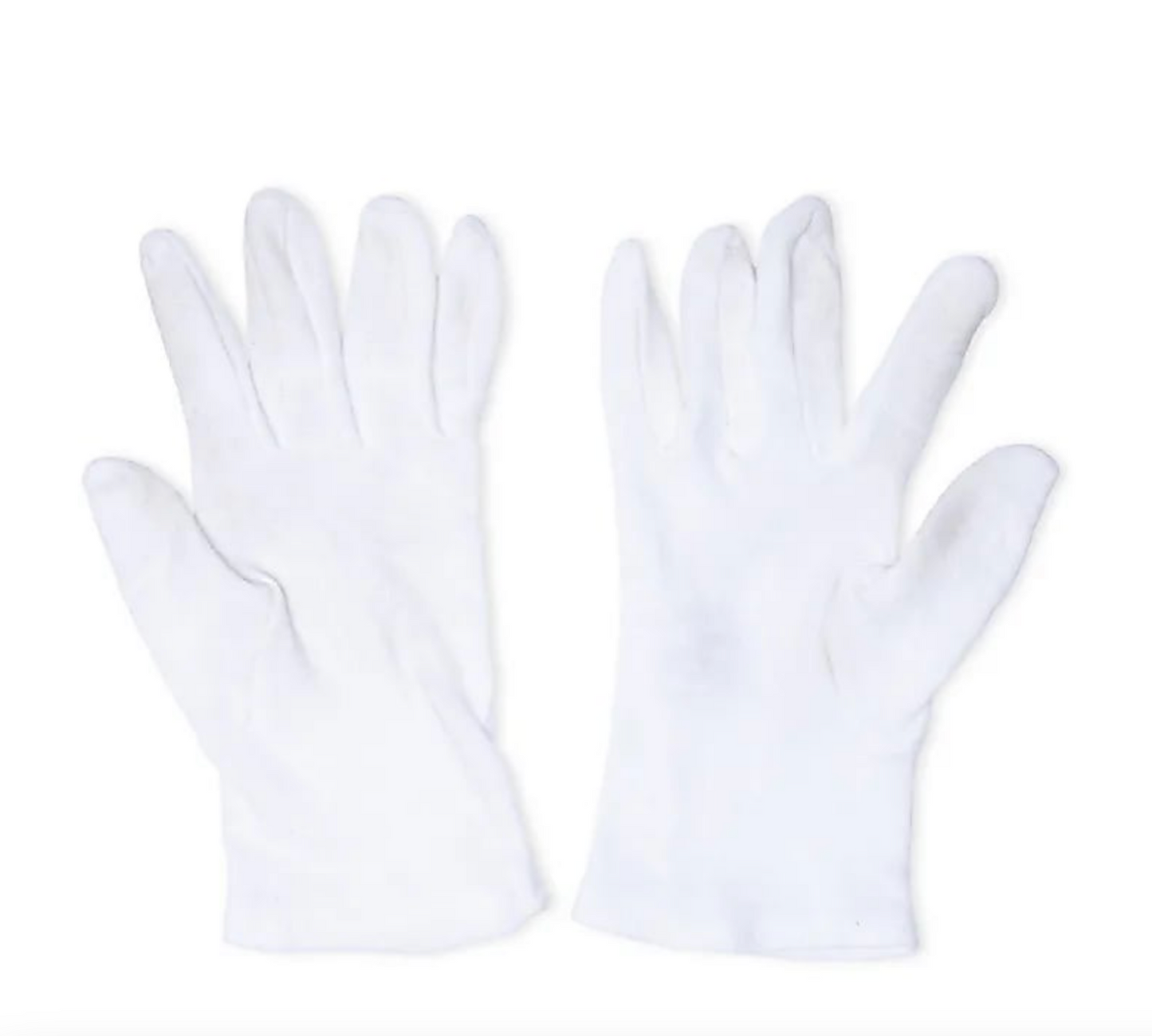Silver-plated singing bowl, 4 sizes (20-30 cm), Buddha design and auspicious symbols. Comes with mallet & glove.
Silver-plated singing bowl, 4 sizes (20-30 cm), Buddha design and auspicious symbols. Comes with mallet & glove.
Couldn't load pickup availability
- ✧─────✧
About the product:
→ Singing bowl adorned with engravings of Shakyamuni Buddha and the five Dhyani Buddhas and auspicious symbols such as the double dorje, the lotus and the endless knot, as well as the compassion mantra "Om Mani Pad Me Hum".
🌍 Origin: Nepal
📐 Dimensions: Ø 20, 23, 25 to 30 centimeters
⚖️ Weight: ± 1,100 to 2,800 grams
🧬 Materials: Made of bronze and silver plated.
🎶 Sound type: Perfect quality, the sound is medium to low and quite long.
📦 Packaging: Sold individually with a free cushion and mallet - Includes a pair of white gloves to avoid marking the bowl and a suitable mallet!
🎁 Ideal as a gift or a treat for yourself!
1. About Silver Plating: It is applied using a meticulous electrochemical process, enveloping each bowl in a brilliant layer of pure silver that enriches its tone and vibrations.
Advantages of Silver plating, with its high density and excellent acoustic properties, enhances the natural purity of the sound of a singing bowl, creating a clear and uplifting sound.
The reflective surface of the bowl not only adds to its aesthetic appeal, but can also amplify the energy it radiates, making it a powerful tool for meditation and sound healing.
👉 Important to know: The percentages of metals, the diameter and the thickness of the different bowls provide the specific sound and harmonics of each singing bowl. Each bowl is therefore unique.
Please note: all our handmade singing bowls are sorted by weight. The diameter mentioned is an approximate indication, to give you a general idea of the bowl's width.
📎 Information on the process of hammering Tibetan singing bowls:
The hammering process for singing bowls is entirely done by hand. Each singing bowl is hammered following a series of procedures that will give the bowl its perfect shape.
During the manufacturing process, the different metals that make up the bowl are melted in a furnace (copper, tin, iron, lead, gold, and silver) depending on the type of bowl desired, such as bronze bowls or bowls made of the seven metals. The molten metal is then poured into a mold to obtain a metal disc of the desired size and thickness.
At this stage, the metal disc is modeled after being weighed and measured very precisely and then classified according to the type of bowl to come.
Regarding the actual hammering process, 4 or 5 discs are stacked on top of each other and then heated until they become incandescent.
The incandescent metal disc formed is then hammered by skilled craftsmen until the metal is no longer hot; then it is heated again and hammered again.
These two operations, heating and hammering, continue until the desired shape and size are obtained (which explains why hammered singing bowls can have differences of a few centimeters from each other).
During the hammering of the bowls, the metal disc should be struck while still hot, because it is more flexible.
Once cooled, the metal loses its flexibility and becomes increasingly brittle, making it prone to cracking if struck. After achieving the desired shape, the actual bowl-making process begins.
Each bowl is brought to the desired shape and size, renewing the heating and hammering phase if necessary.
Once the desired shape and size are achieved, the bowl is hammered to refine it. The individual bowls are then chiseled and finished inside and out.
📋 Information sheet
| Property | Details |
|---|
| Name | Tibetan singing bowl 🕉️ |
| Nature | Musical instrument and ritual tool |
| Composition | An alloy of several metals (bronze, copper, sometimes silver and tin) |
| Origin / Deposits | Tibet, Nepal, India |
| Appearance | Hollow metal bowl, of various sizes, sometimes decorated with patterns or mantras |
| Sound | Its vibrant and sustained sound, pure and harmonious |
| Virtues / Symbolism | - Energy purification and harmonization 🔔 - Meditation and relaxation - Chakra stimulation and vibrational balance |
| Spiritual use | - Support for meditations and yoga practices - Energy cleansing of places and objects - Sound therapy and deep relaxation |
| Purification | Physical cleaning of the bowl and repeated vibrations to "empty" the previous energy |
| Reloading | Not directly applicable; sometimes exposed to sunlight or moonlight for symbolic energy |
| Value | Varies depending on size, alloy, manufacturing quality, and age. |
| Short story / Anecdote | Used for centuries in Tibetan monasteries, singing bowls served both for meditation and religious rituals. The sound is said to "connect to the primordial sound". |
📋 Detailed chart – Buddhas, symbols & mantras
| Category | Details & Meaning |
|---|---|
| 🧘 Shakyamuni Buddha | Represents awakening and universal wisdom. Symbol of inner peace and compassion. |
| 🧘 The Five Dhyani Buddhas | Figures of meditation, each embodies a spiritual energy: wisdom, compassion, equanimity, accomplishment and reflection. |
| 🔱 Double Dorje (Crossed Vajra) | Symbol of protection and spiritual stability. Represents the unwavering power of the awakened mind. |
| 🌸 Lotus | Sacred flower of purity and spiritual rebirth. Emerging from the mud to bloom in the light. |
| 🔗 Endless knot | A symbol of universal harmony, the interconnectedness of all things, and the infinite cycle of life. |
| 🔮 Mantra “Om Mani Padme Hum” | A mantra of compassion and enlightenment. Repeated, it purifies the mind and opens the heart to universal love. |
- ✧─────✧
A question? A comment? | Order and delivery information
A question? A comment? | Order and delivery information
⋯⋯⋯⋯⋯⋯⋯⋯⋯⋯⋯⋯⋯⋯⋯⋯⋯⋯⋯⋯
📞 Customer service available from Tuesday to Saturday , from 10am to 7pm (French time)
- 🇫🇷 From France: 06 51 85 38 18
- 🌍 From abroad: +33 6 51 85 38 18
- 💬 Live chat: via the bubble in the bottom right corner of your screen
- 📧 Email : available 24/7 – we respond quickly!
⋯⋯⋯⋯⋯⋯⋯⋯⋯⋯⋯⋯⋯⋯⋯⋯⋯⋯⋯⋯
🔖 Order today and receive your package within 2 to 10 days depending on your continent.
💳 Secure payment & certified by SSL encryption 🔐
↩️ Returns & exchanges possible within 14 to 30 days after receipt.
🌍 Shipping costs are calculated automatically based on your shipping address at checkout.
📦 Country of shipment: France 🇫🇷
Share
